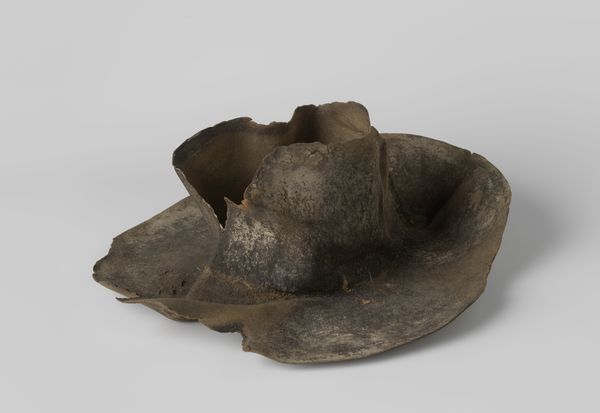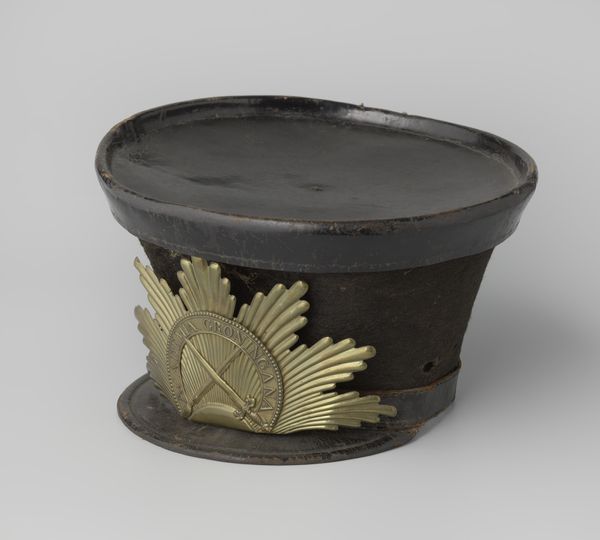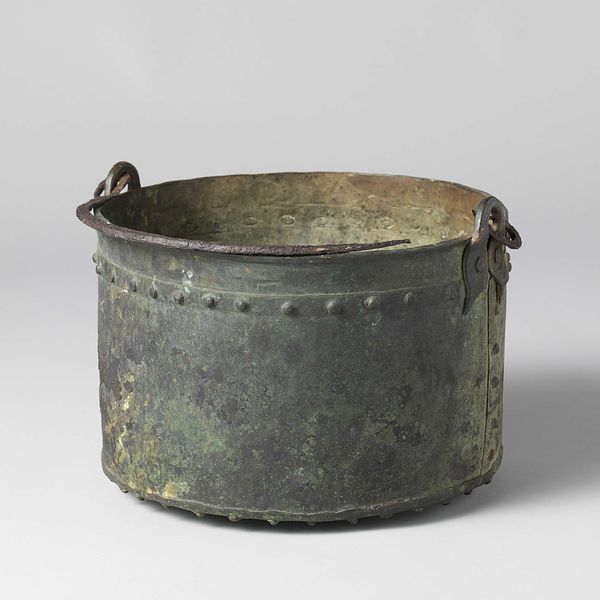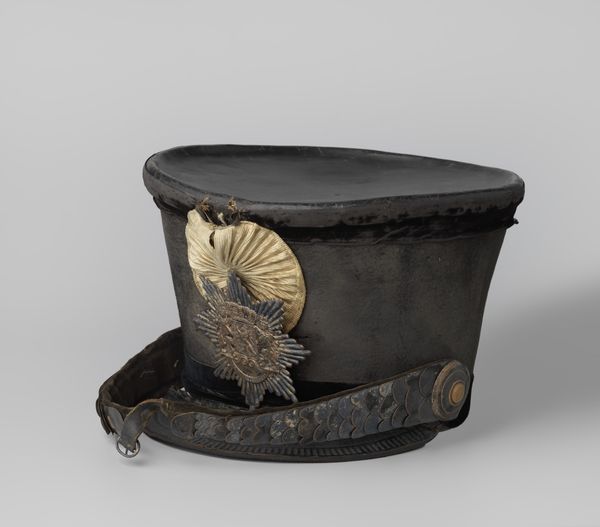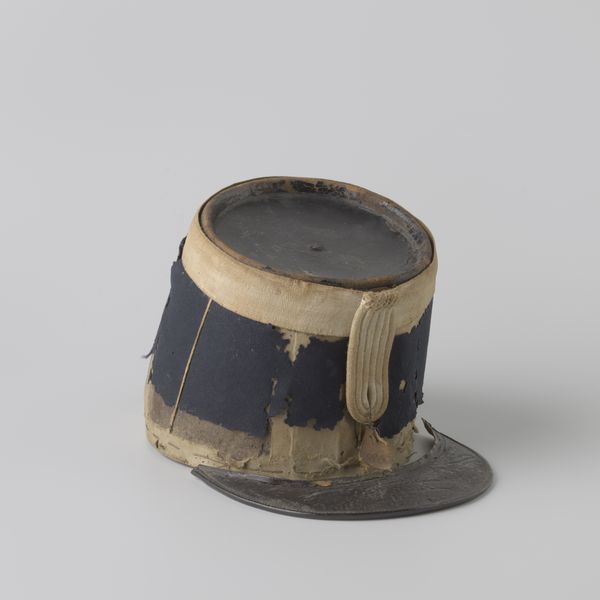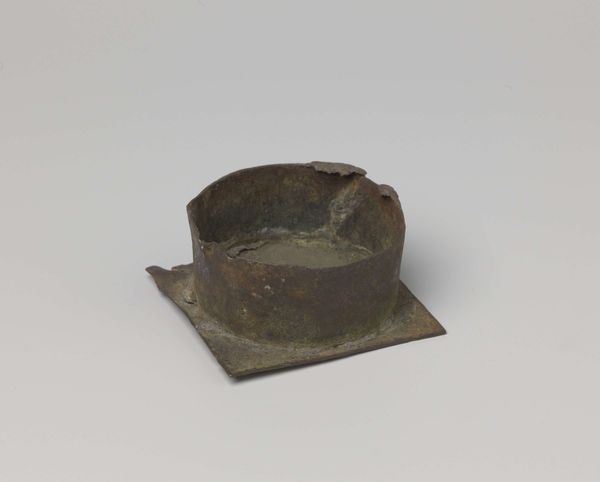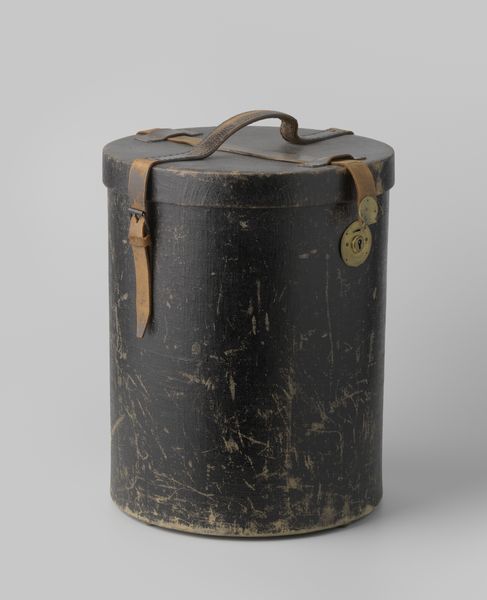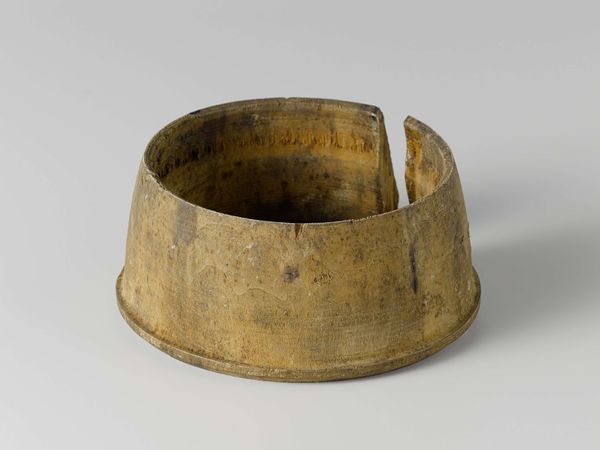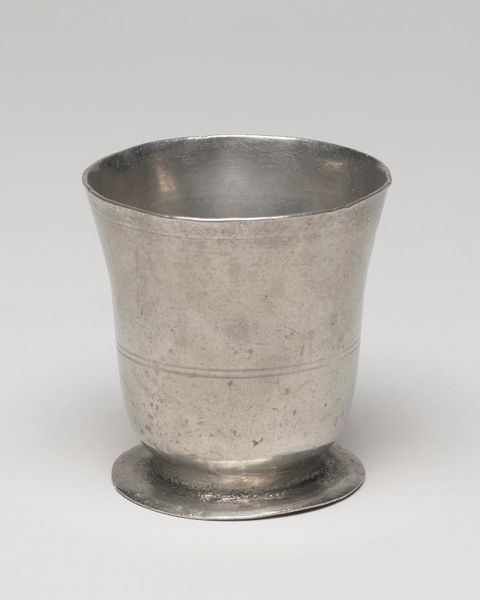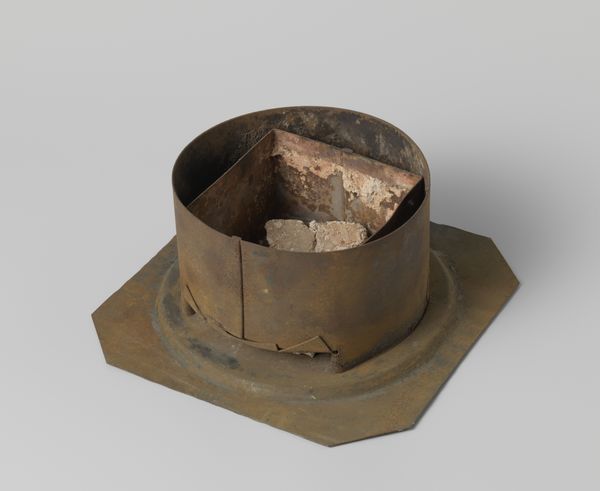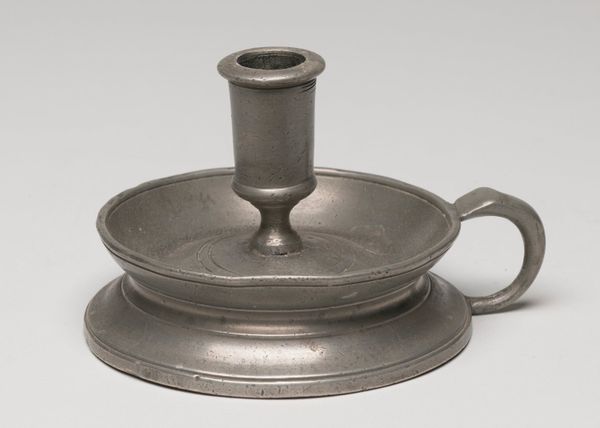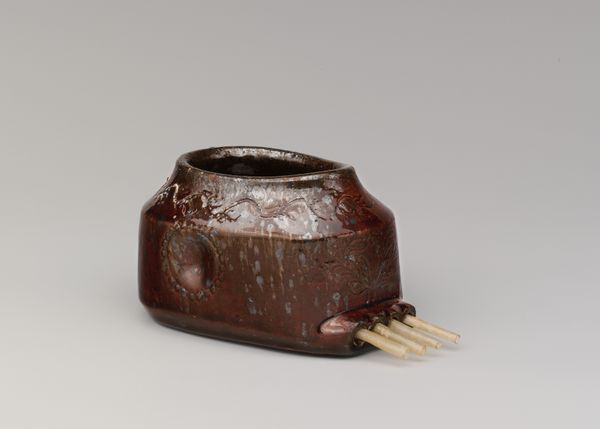
#
portrait
#
medieval
#
history-painting
Dimensions: width 34.5 cm, height 20 cm, depth 29.5 cm, height 18.8 cm, height 17 cm, diameter 23 cm, diameter 28 cm
Copyright: Rijks Museum: Open Domain
Curator: This is a shako, a military cap worn by the Royal Netherlands Marine Corps around 1828. It's an anonymous piece, steeped in history. Editor: Stark, isn't it? Utilitarian. Almost oppressive with its dark hue. It really anchors you to a specific era of authority. Curator: Absolutely. Think about the weight of expectation this cap would have carried. Crafted in the earlier half of the 19th century, it symbolizes power structures deeply embedded within Dutch society, built on colonial enterprise and military might. How might the wearer perceive the item? Editor: I imagine the weight would be more psychological than physical. All those associations with orders barked and discipline enforced. This isn't just a hat; it’s a declaration. How did the shako influence self-perception, the execution of orders, the dynamic between soldier and officer? Did it give authority, invite fear? It is the human in, and facing, the shako. Curator: A great point! It's a symbol representing complex layers of historical narrative, of hierarchy, of the individual lost within the system. Editor: Indeed! From my perspective, analyzing something like this pushes us to unpack the problematic sides of that history: slavery, global domination, and erasure. It demands we interrogate those structures that still impact today. Curator: Looking at this cap now, devoid of its wearer and context, does prompt necessary contemplation. We can interpret it from different viewpoints, as a cultural relic representing national pride, and even as a painful symbol reminding us of a dark chapter of our past. Editor: Precisely. Something as simple as a hat prompts so much reckoning. It really emphasizes how intertwined material objects can be with broader power dynamics. Thanks to these lenses, we're not merely observing; we are actively confronting history and encouraging discourse. Curator: I see this shako not only as a historical artefact, but as an inspiration. It embodies history itself and it should also encourage modern artists and artisans to respond with their vision. Thank you!
Comments
No comments
Be the first to comment and join the conversation on the ultimate creative platform.

